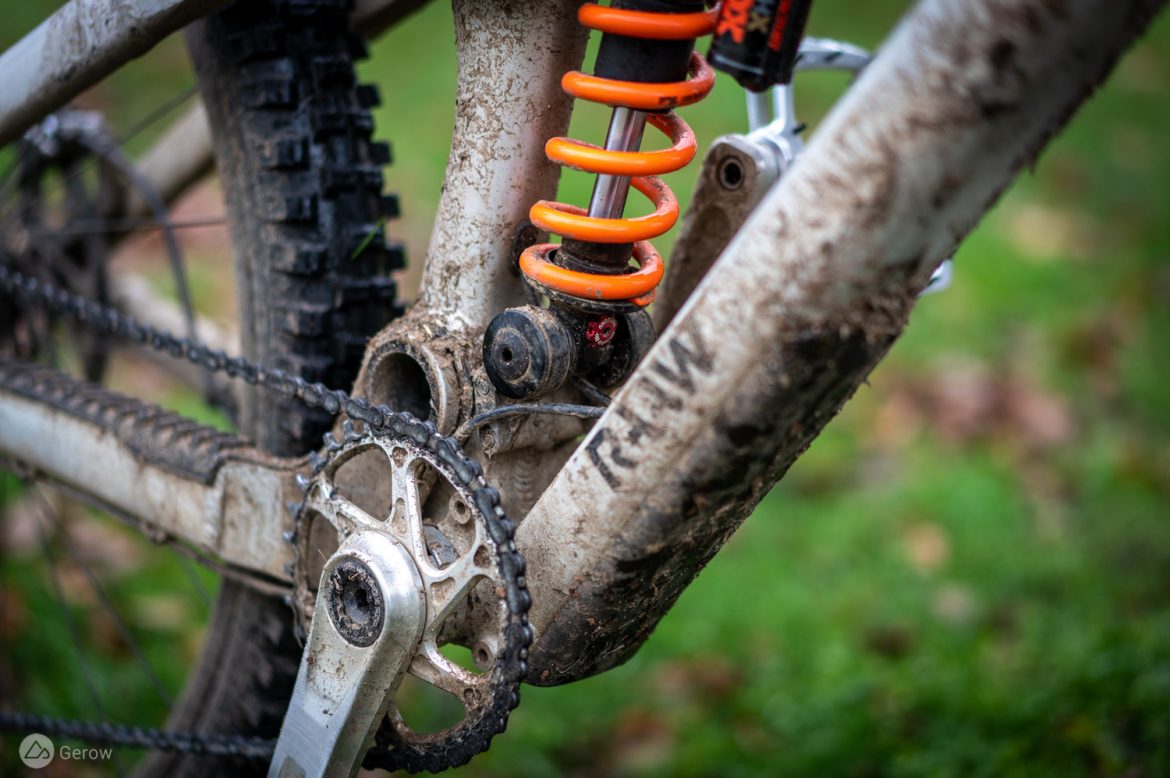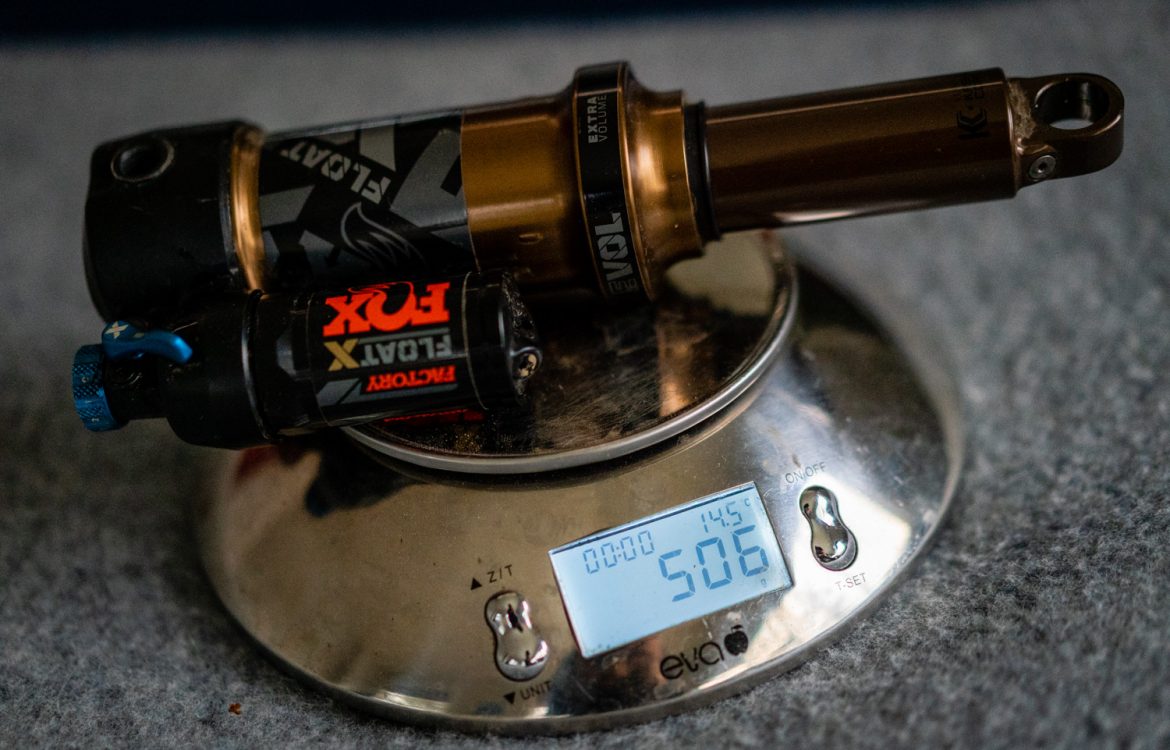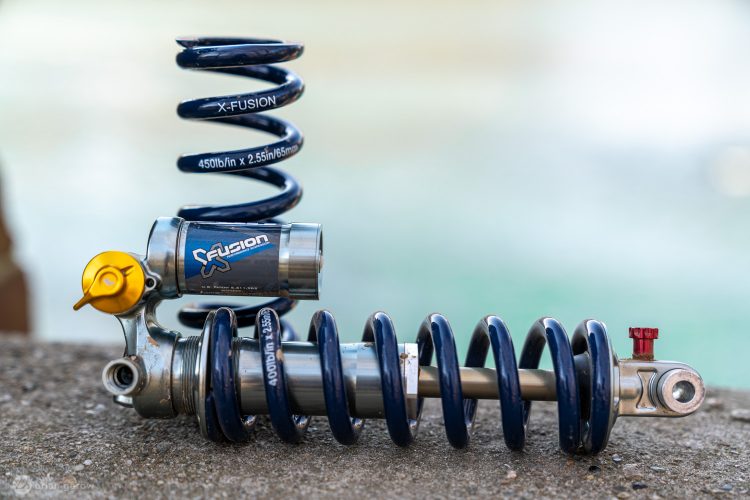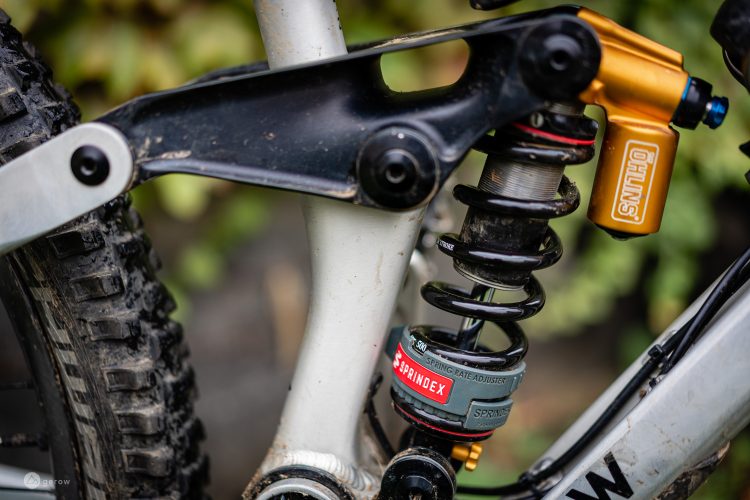
While modern fabrics can be dyed in infinite hues, there’s a simple and safe color choice when buying a wedding dress. If you buy a white gown no one will question it, and there’s a good chance the photographer’s autofocus sensor will love it. The same isn’t true with a mountain bike shock, where selecting a spring that doesn’t fit with the frame or oft-ridden trails can cause some riders to hem and haw incessantly. We tested the new Fox Float X air shock a short while ago, and would now like to share our experience with their DHX coil-spring shock (available at JensonUSA) that debuted the same day in 2021.
This coil squisher has a heftier colleague that’s been around the gravity MTB circuit for a while, called the DHX2. Externally, the primary differences are that the DHX only has low-speed compression and rebound adjustments, whereas the DHX2 has high- and low-speed knobs for both compression and return. These are some of the visual elements that move the shock toward Fox’s intended use of lighter “trail riding” for the DHX, and gravity racing for the DHX2. The new DHX also has numbered positions on the compression and rebound knobs so riders don’t have to count and re-click their way to a preferred setting. The DHX only comes in metric sizes, so folks who need imperial shock sizing will have to stick with the DHX2.
Before spinning a full crank rotation, I could feel a difference between the Float X air shock I had been riding and this DHX I’d mounted up minutes earlier. Setting both shocks up with similar static sag left the coil to sit a little deeper in its travel with even the smallest weight shifts. The shock moves significantly more with pedaling forces, and I quickly made use of its climb switch to tame that bounce and continued to reach for the switch on any climb lasting over a minute or two.
Installation and setup with this shock is as simple as you might expect. Simply find the correct spring for your weight, click through the sixteen rebound positions and twelve compression options, and click the spring preload just tight enough so the spring doesn’t rattle. The adjuster-knob detents are positive and clear, making it easy to tell when you’ve arrived in the right spot. I’m not sure why anyone would need sixteen clicks of rebound adjustment, and other top-shelf shocks like the Öhlins TTX22M offer sufficient range with only six. If the idea is to offer a simpler shock for non-race applications, cutting the clicks in half on the DHX might have helped. As it stands, you will need to move the dial by two clicks to feel a meaningful performative difference.

Fox has added a cool feature with indexing on their spring preload collar that allow you to click in a precise amount of force. This makes it easier to know exactly how much preload you’re using and to test different amounts. Most other shocks leave you with a guessing game wherein you have to tighten the preload until the spring stops wiggling and then crudely rotate the ring by quarter turns to sort out how far you want it to go.
Lighter riders who often want as little preload as possible may particularly benefit from this sweet feature. They can get the spring stable and just add 1-2 clicks to keep it there, resulting in minimal breakaway force to get the shock moving and hence better overall grip.
On trail talk

While Fox markets the DHX as a “trail” coil, I wouldn’t hesitate to race with it below my bum. This shock offers similar support and grip compared to most of the full-gravity-focused models I’ve ridden, leaving only high-speed adjustments to be desired. Like most consumer-ready products from Fox, the damper is well-tuned to provide maximum grip and comfort out of the box. If more aggressive riders and racers want to add some oomph, the Fox Factory Tune program is likely the best way to make that happen.
In the grip department, there are no compromises coming from the DHX. That same soft first-third of the travel that has the shock asking for a closed climb switch while ascending is precisely what you want on greasy trails when traction is equally scarce and necessary. It feels like there’s zero stiction, and the rear end conforms smoothly to the earth. You may be thinking that uber silky movement early in the travel will create a rear end that’s hard to flick into the air, but you’d be mistaken. With a slightly over-sprung setup and some relatively fast rebound, you can achieve plenty of loft with this squish, just like any other. I had no trouble getting the nearly 17kg Raaw Madonna test rig off the lip, and the bike only has about 15% progressivity, which can make slower rebound stand out.
The shock’s bottom-out bumper works exceptionally well to manage the final chunk of travel, and I have yet to feel or hear any harsh clanging when we reach the end of the 160mm together. Paired with the rubberized upper shock body, this unit is quiet overall, allowing the rider to focus on the trail and traction sounds rather than a clanging steel spring.
Fox designed the DHX with a hydraulic top-out feature to silence things on the re-extension, but this is one area I have noticed a small amount of noise. It’s not an alarming sound, nor did I find it distracting, but when you’re flying through loads of larger impacts you can hear the shock return to full travel. This isn’t an issue, but something to note if you’re riding this shock and wondering what the sound is between your legs. If that sounds unacceptable, look toward a shock with high-speed rebound adjustment like the DHX2.
For my personal taste, the DHX2 is worth its roughly $100 additional retail cost over the DHX. It weighs more than its “trail” coworker, but the addition of high-speed compression and rebound adjustments will be worth that heft for some riders. My wedding dress needs more room for tailoring than the DHX provides, but if you want a simpler coil shock that works super well for hard riding and racing this one is well worth a gander.
Party laps
- Clear markings on adjustment knobs
- Preload detents for precise tuning
- Silky grip and quiet bottom out
Pros and cons of the Fox Float DHX shock.
Dirt naps
- Slight top-out noise
- Significantly heavier than the Float X
- Orange springs aren’t for everyone
The Float DHX shock is only available in a Factory model, with the same length and stroke options as the air shock, for USD $549, CDN $769, or EUR €759 without the coil.
⭐️ The Fox Float DHX mountain bike coil shock is available at JensonUSA.






















